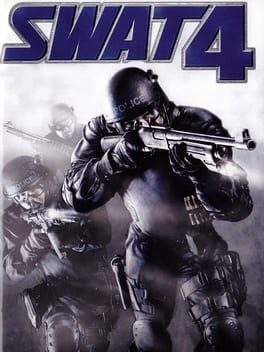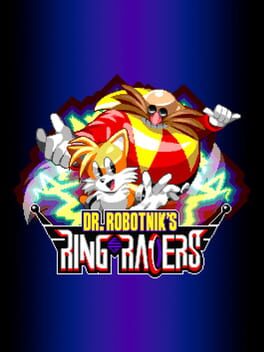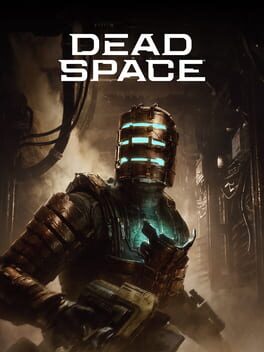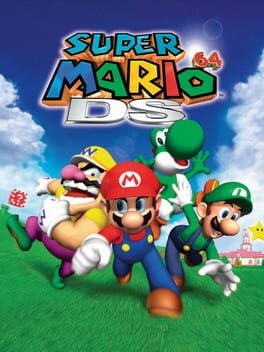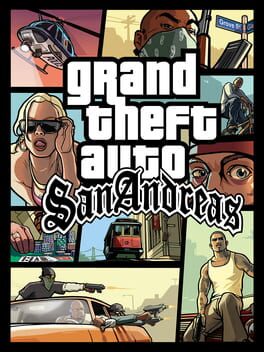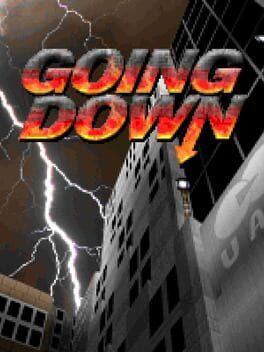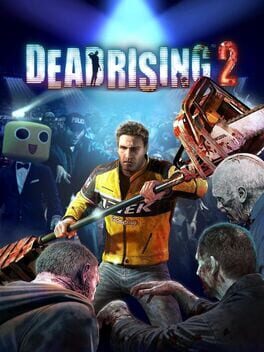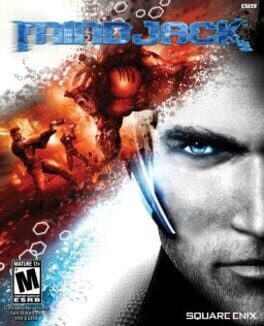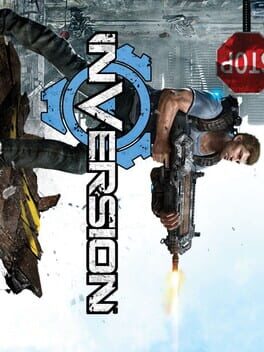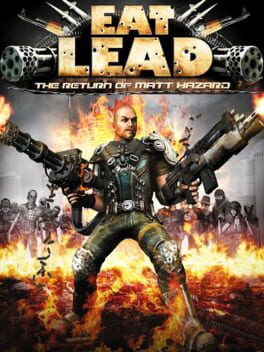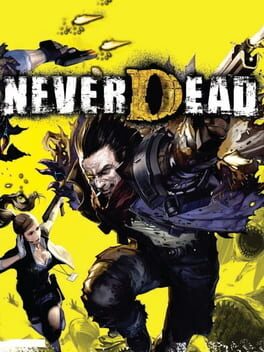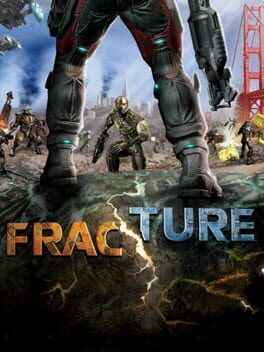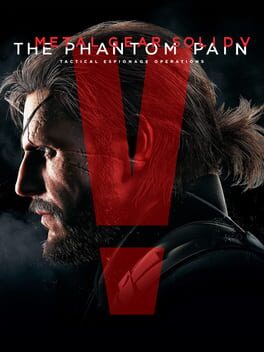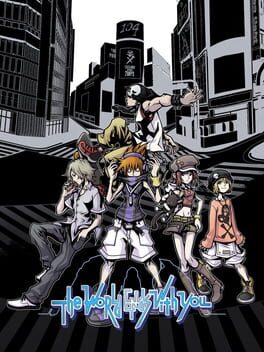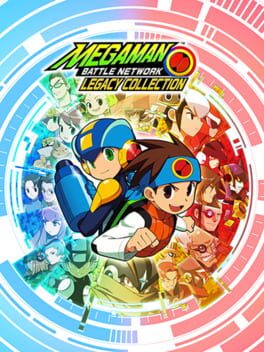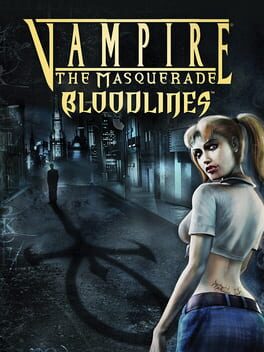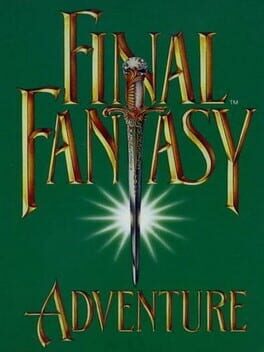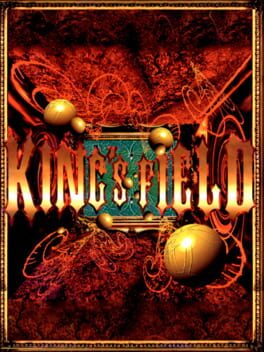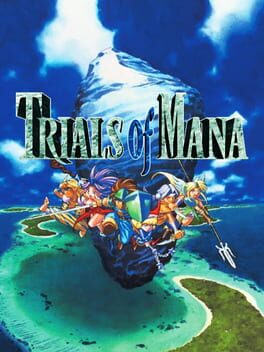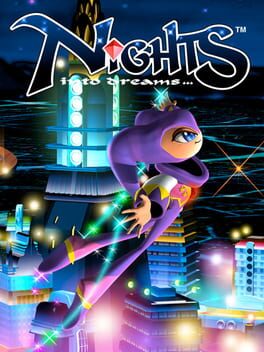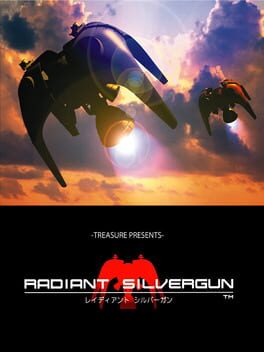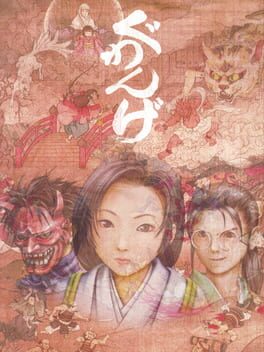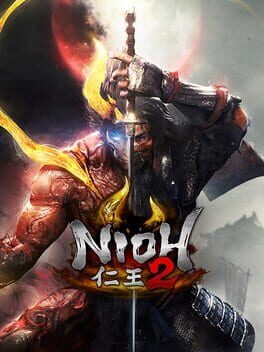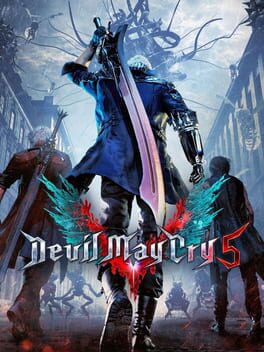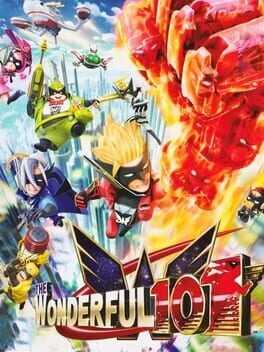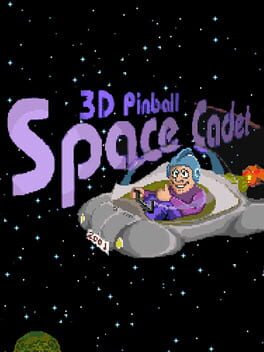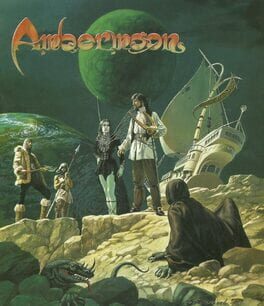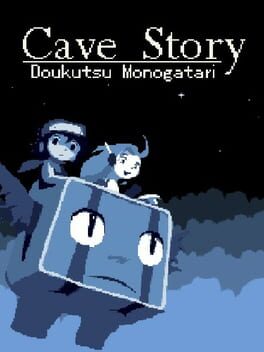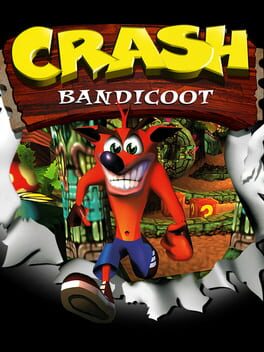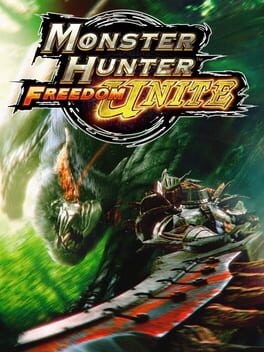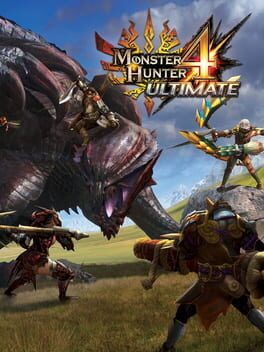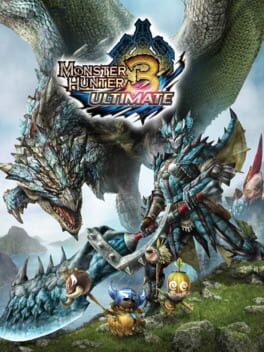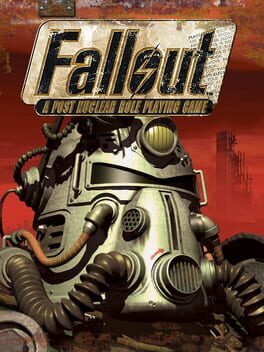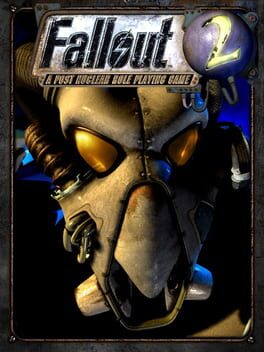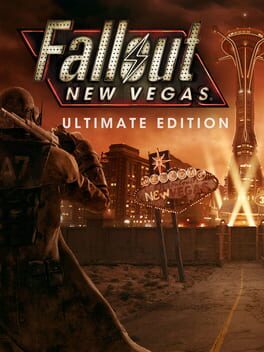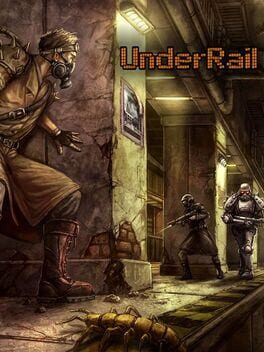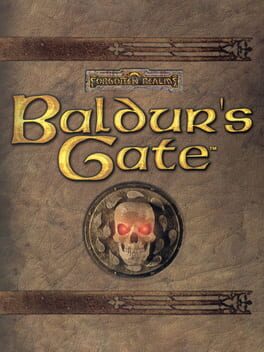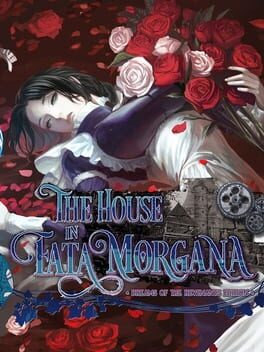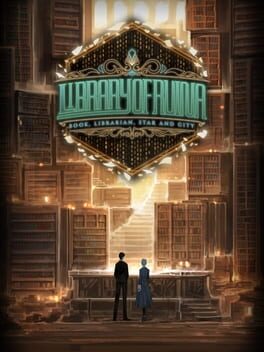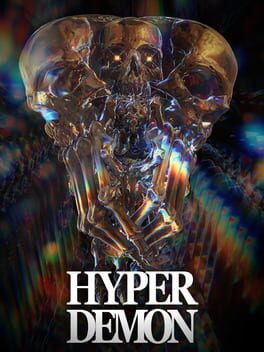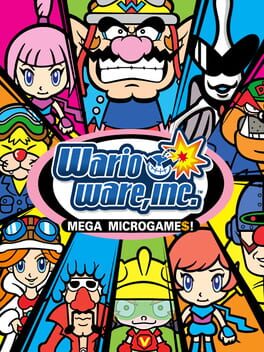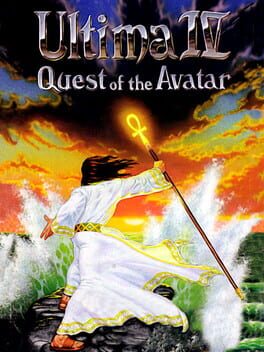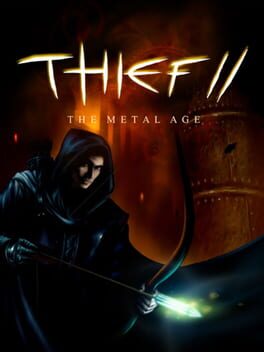Isaka
34 reviews liked by Isaka
SWAT 4
2005
So above and beyond what a tactical police shooter would reasonably need to have in so many different areas that you wonder how it even came to be. SWAT 4 may sit at the top of the very narrow category of most anxiety-inducing simultaneous first and second person shooters with needlessly detailed environmental storytelling, but it’s led me to a much broader, more general thought – for how saturated and longstanding a genre it is, how much has what you can do with a shooter really been explored?
A few things about it bring this question to mind, but the main one for me’s its morale system. Each enemy and civilian has a different level of morale which affects how likely they are to surrender, pretend to surrender before pulling some kind of stunt or be nakedly noncompliant whenever you and your squad shout at them. By themselves, these kinds of reactions go a long way toward making it so that the player can never guess what’ll happen when they open any given door, but what takes this system to the next level is the sheer amount of factors which can affect it; whether they’re a group of trained gunman or a single inexperienced gangbanger, whether they’ve been stunned with some form of nonlethal attack, whether there are any hostages for them to take advantage of or hostiles to point you in the direction of, how many of you there are versus how many of them, how much damage they’ve sustained to each of their limbs and, my favourite, surprising them with warning shots. I’d never realised until playing this that hitting or missing a target in a shooter doesn’t necessarily have to be a dichotomy between success or failure – here, the latter can also be a tool for intimidation when Officer Backloggd User’s vocal chords aren’t cutting it alone. Firing a shotgun near someone’s feet to twist what’d normally be a failure state into something potentially advantageous extends past the fantasy of feeling like a Michael Mann character and gets the mind wondering about the uncapitalised potential of not just this genre, but others too. Why, for instance, do RPGs still often limit us to dialogue boxes labelled (Intimidate) or whatever when a far more organic implementation of that sort of interaction’s right here?
This sort of unpredictability which causes each attempt at the same level to play out differently every time’s a specialty of SWAT 4. Choosing different entry points coupled with NPCs’ semi-randomised spawns contribute a fair amount to this too, especially when specific characters are part of the mission’s objectives in some way, though the fact that the aforementioned limb-based damage system also applies to you and your squad plays a large role as well. While the extent to which this game wants you to take it slow’s immediately felt in the pairing of its relatively low movement speed and how harshly guns’ crosshairs widen, it becomes even more apparent when you’ve got an injured leg, head or arm. Suddenly, you find yourself even more hesitant to attempt to follow a fleeing suspect through a series of doors they’re shutting behind them, and whatever strategies you had in mind when selecting your long-range equipment have been scuppered by your diminished accuracy. If it sounds restrictive, don’t worry, because it can open up about as many avenues of play as it can close; one example I particularly enjoyed involved clearing a mission which heavily encourages you to use nonlethal weaponry by instead aiming for unarmoured limbs with 9mm FMJ rounds, since it’s easier to skirt around score penalties by incapacitating hostiles rather than killing them.
Although there’s an easy comparison to be made in terms of the replayability of individual encounters with its contemporary F.E.A.R., down to how heavily this stems from the AI’s dynamic behaviours, there’s another, less expected parallel in how thickly it lays on all things atmospheric. Breaching a two-storey room filled with explosive canisters and over half a dozen heavily armed death cultists is nerve-wracking enough, then it decides to hit you with a scene like this just moments after. It’d be easy to think of moments like this or a much earlier, loose equivalent of VTMB’s Ocean House Hotel as borderline genre pivots, but they’re more tonally synergistic than they seem at first. This is a game in which you die in two clean hits regardless of difficulty, so much as taking your eye off a bodycam for a second can prove to be fatal and, as noted above, you can never fully anticipate what’s going to greet you on the other side of a door, so it makes sense to ensure that the player can never anticipate what’s up next on a conceptual level in addition to a mechanical one, as well as to occasionally dial up the horror and exacerbate the uneasiness that average Joes with Uzis are already so good at instilling.
Irrational’s prior experience with horror isn’t the only instance of their ancestry rearing its head in the least likely of places, either. If you weren’t aware that they originated by splintering off from Looking Glass, having played one of the first two Thief games prior to this will probably clue you in, because SWAT 4’s incomplete, often hand-drawn, hastily annotated maps are straight out of those. You can only ever make a rough mental approximation of the layout of wherever you’re about to raid because of it, and chances are it’ll have geographical changes, potential hazards or other objectives they can’t possibly account for. It’s a small but brilliant touch which makes every eruption of overlapping GET DOWNs and WHERE’S MY GODDAMN LAWYERs mixed with gunfire all the more hectic as you’re inevitably forced to piece together your own whereabouts in the thick of it, usually while juggling your own perspective with that of a squadmate’s bodycam or a sniper feed to boot.
Despite how spur-of-the-moment all of this makes it sound and how many different ingredients are packed into it, up to and including some of Eric Brosius’ funkiest work, SWAT 4’s really a game of exceptionally singular focus; as the objective menu puts it, restoring order to chaos. It’s felt even in the size of its levels, which are just right for how many moving parts they each have and the number of ways in which those parts can be manipulated – you can charge me on account of lying if I told you that it’s always fun hunting down the last remaining suspect regardless, but it is always intense, and in general the most minor of blemishes on what’s otherwise one of many attestations to the fact that we’d probably be grand if games had just stopped progressing past what they could do in 2005.
Keep your cool, fiddle with your squadmates’ equipment and make regular use of the command menu to breach whatever obstacles are between you and giving this game a try, boss.
A few things about it bring this question to mind, but the main one for me’s its morale system. Each enemy and civilian has a different level of morale which affects how likely they are to surrender, pretend to surrender before pulling some kind of stunt or be nakedly noncompliant whenever you and your squad shout at them. By themselves, these kinds of reactions go a long way toward making it so that the player can never guess what’ll happen when they open any given door, but what takes this system to the next level is the sheer amount of factors which can affect it; whether they’re a group of trained gunman or a single inexperienced gangbanger, whether they’ve been stunned with some form of nonlethal attack, whether there are any hostages for them to take advantage of or hostiles to point you in the direction of, how many of you there are versus how many of them, how much damage they’ve sustained to each of their limbs and, my favourite, surprising them with warning shots. I’d never realised until playing this that hitting or missing a target in a shooter doesn’t necessarily have to be a dichotomy between success or failure – here, the latter can also be a tool for intimidation when Officer Backloggd User’s vocal chords aren’t cutting it alone. Firing a shotgun near someone’s feet to twist what’d normally be a failure state into something potentially advantageous extends past the fantasy of feeling like a Michael Mann character and gets the mind wondering about the uncapitalised potential of not just this genre, but others too. Why, for instance, do RPGs still often limit us to dialogue boxes labelled (Intimidate) or whatever when a far more organic implementation of that sort of interaction’s right here?
This sort of unpredictability which causes each attempt at the same level to play out differently every time’s a specialty of SWAT 4. Choosing different entry points coupled with NPCs’ semi-randomised spawns contribute a fair amount to this too, especially when specific characters are part of the mission’s objectives in some way, though the fact that the aforementioned limb-based damage system also applies to you and your squad plays a large role as well. While the extent to which this game wants you to take it slow’s immediately felt in the pairing of its relatively low movement speed and how harshly guns’ crosshairs widen, it becomes even more apparent when you’ve got an injured leg, head or arm. Suddenly, you find yourself even more hesitant to attempt to follow a fleeing suspect through a series of doors they’re shutting behind them, and whatever strategies you had in mind when selecting your long-range equipment have been scuppered by your diminished accuracy. If it sounds restrictive, don’t worry, because it can open up about as many avenues of play as it can close; one example I particularly enjoyed involved clearing a mission which heavily encourages you to use nonlethal weaponry by instead aiming for unarmoured limbs with 9mm FMJ rounds, since it’s easier to skirt around score penalties by incapacitating hostiles rather than killing them.
Although there’s an easy comparison to be made in terms of the replayability of individual encounters with its contemporary F.E.A.R., down to how heavily this stems from the AI’s dynamic behaviours, there’s another, less expected parallel in how thickly it lays on all things atmospheric. Breaching a two-storey room filled with explosive canisters and over half a dozen heavily armed death cultists is nerve-wracking enough, then it decides to hit you with a scene like this just moments after. It’d be easy to think of moments like this or a much earlier, loose equivalent of VTMB’s Ocean House Hotel as borderline genre pivots, but they’re more tonally synergistic than they seem at first. This is a game in which you die in two clean hits regardless of difficulty, so much as taking your eye off a bodycam for a second can prove to be fatal and, as noted above, you can never fully anticipate what’s going to greet you on the other side of a door, so it makes sense to ensure that the player can never anticipate what’s up next on a conceptual level in addition to a mechanical one, as well as to occasionally dial up the horror and exacerbate the uneasiness that average Joes with Uzis are already so good at instilling.
Irrational’s prior experience with horror isn’t the only instance of their ancestry rearing its head in the least likely of places, either. If you weren’t aware that they originated by splintering off from Looking Glass, having played one of the first two Thief games prior to this will probably clue you in, because SWAT 4’s incomplete, often hand-drawn, hastily annotated maps are straight out of those. You can only ever make a rough mental approximation of the layout of wherever you’re about to raid because of it, and chances are it’ll have geographical changes, potential hazards or other objectives they can’t possibly account for. It’s a small but brilliant touch which makes every eruption of overlapping GET DOWNs and WHERE’S MY GODDAMN LAWYERs mixed with gunfire all the more hectic as you’re inevitably forced to piece together your own whereabouts in the thick of it, usually while juggling your own perspective with that of a squadmate’s bodycam or a sniper feed to boot.
Despite how spur-of-the-moment all of this makes it sound and how many different ingredients are packed into it, up to and including some of Eric Brosius’ funkiest work, SWAT 4’s really a game of exceptionally singular focus; as the objective menu puts it, restoring order to chaos. It’s felt even in the size of its levels, which are just right for how many moving parts they each have and the number of ways in which those parts can be manipulated – you can charge me on account of lying if I told you that it’s always fun hunting down the last remaining suspect regardless, but it is always intense, and in general the most minor of blemishes on what’s otherwise one of many attestations to the fact that we’d probably be grand if games had just stopped progressing past what they could do in 2005.
Keep your cool, fiddle with your squadmates’ equipment and make regular use of the command menu to breach whatever obstacles are between you and giving this game a try, boss.
Dead Space
2023
Inessential.
Despite the many quality-of-life changes meant to bring this more in line with the rest of the series, like updating the Zero-G sections and letting you use your kinesis more offensively, the broad strokes of the game are surprisingly close to the original. A change I was really looking forward to was the “Intensity Director” which is meant to dynamically alter the mood of areas and what enemies will spawn, but in practice, this mostly seems to determine whether or not you’ll get ambushed while backtracking instead of radically altering the major combat encounter. It’s a nice thrill to occasionally get surrounded by enemies, but as with so many of the new features of the remake, it doesn’t wholly commit to this idea, more a proof-of-concept that could be really transformative if it was expanded on somewhere else. Basic Necromorphs are also substantially less threatening due to the fact that it’s surprisingly easy to stunlock them by stomping on them once their legs have been shot out, and for the sheer effectiveness of these newly revamped kinesis powers (encounters and the ammo economy needed to be dramatically changed to make threats meaningful the player).
Given that this production seems to owe so much to the success of the recent Resident Evil remakes, I wish it would’ve taken a cue from them and include some bolder pieces of design and pacing- throw in an extra Regenerator fight, change the order of levels, or go all the way and pull the best enemies from the entire series to give these fights an extra edge. There are earnest discussions to be had about what function the RE remakes serve (if they’re replacements or reimaginings) but at least they’re distinct- I’m compelled to go back to them from time to time!
Really, I think the hesitance to change to radically alter the structure and encounter design speaks to the real intent of this remake, which seems far more interested in making the narrative flow more seamlessly between this and Dead Space 2. Isaac Clarke more or less had to be invented as a character in the sequel, and that made the amount of screentime that was devoted to his guilt over Nicole all the more weightless- retconned baggage that hardly landed. The attempt to expand their relationship mostly works, the revelations here about how their relationship ended are much better about setting the groundwork for their arc in the sequel. For as strong as this dynamic, it seems to have come at the cost of much of the supporting cast; compared to their original versions, everyone on the Ishimura comes as the lifeless versions of themselves. Dr. Kyne and Dr. Mercer were amazing presences thanks to great performances by Keith Szarabajka and Navid Negahban respectively, but without that prior context, I’m not sure these new iterations of the characters will stay in the minds of those who’ve only played the remake.
The biggest sin is that the remake ends up being dreadfully boring to play through in practice, the threats so similar to the original that the horror doesn’t land and the action so easy to break that it actively feels like a regression from the constraints of the earlier version of combat design. There’s obvious passion for the project here, especially in some of the granular details, but seemingly not the broader vision needed to successfully combine the old and new ideas together.
Despite the many quality-of-life changes meant to bring this more in line with the rest of the series, like updating the Zero-G sections and letting you use your kinesis more offensively, the broad strokes of the game are surprisingly close to the original. A change I was really looking forward to was the “Intensity Director” which is meant to dynamically alter the mood of areas and what enemies will spawn, but in practice, this mostly seems to determine whether or not you’ll get ambushed while backtracking instead of radically altering the major combat encounter. It’s a nice thrill to occasionally get surrounded by enemies, but as with so many of the new features of the remake, it doesn’t wholly commit to this idea, more a proof-of-concept that could be really transformative if it was expanded on somewhere else. Basic Necromorphs are also substantially less threatening due to the fact that it’s surprisingly easy to stunlock them by stomping on them once their legs have been shot out, and for the sheer effectiveness of these newly revamped kinesis powers (encounters and the ammo economy needed to be dramatically changed to make threats meaningful the player).
Given that this production seems to owe so much to the success of the recent Resident Evil remakes, I wish it would’ve taken a cue from them and include some bolder pieces of design and pacing- throw in an extra Regenerator fight, change the order of levels, or go all the way and pull the best enemies from the entire series to give these fights an extra edge. There are earnest discussions to be had about what function the RE remakes serve (if they’re replacements or reimaginings) but at least they’re distinct- I’m compelled to go back to them from time to time!
Really, I think the hesitance to change to radically alter the structure and encounter design speaks to the real intent of this remake, which seems far more interested in making the narrative flow more seamlessly between this and Dead Space 2. Isaac Clarke more or less had to be invented as a character in the sequel, and that made the amount of screentime that was devoted to his guilt over Nicole all the more weightless- retconned baggage that hardly landed. The attempt to expand their relationship mostly works, the revelations here about how their relationship ended are much better about setting the groundwork for their arc in the sequel. For as strong as this dynamic, it seems to have come at the cost of much of the supporting cast; compared to their original versions, everyone on the Ishimura comes as the lifeless versions of themselves. Dr. Kyne and Dr. Mercer were amazing presences thanks to great performances by Keith Szarabajka and Navid Negahban respectively, but without that prior context, I’m not sure these new iterations of the characters will stay in the minds of those who’ve only played the remake.
The biggest sin is that the remake ends up being dreadfully boring to play through in practice, the threats so similar to the original that the horror doesn’t land and the action so easy to break that it actively feels like a regression from the constraints of the earlier version of combat design. There’s obvious passion for the project here, especially in some of the granular details, but seemingly not the broader vision needed to successfully combine the old and new ideas together.
Super Mario 64
1996
An experienced dev team's first foray into true 3D that, shockingly, gets it right all the way back in June 1996.
Absolutely rock-solid fundamentals which set the tone for the rest of the genre. Analog controls enable precise adjustment of angles which have huge downstream effects. A signature focus on momentum, combined with tricks both intentional and unintentional, birthed one of the most legendary and iconic speedrunning scenes of all time. Systems like this in a casual single player context, balanced to enhance rather than subvert challenges, are rare to find, and even the devs themselves never quite managed to recapture this particular flavor.
The level design here is emblematic of the early 3D era "golden age": enough detail and representation to evoke sense of place, but with the abstraction necessitated by the time's technology both facilitating dense layouts and imbuing the atmosphere with a surreal, dreamlike quality. No established formulas for success existed yet, so levels aren't overly concerned with providing the player a frictionless experience. Each expresses their own quirky character, something felt even more strongly than usual since gameplay is so contextualized by the precise placement of nearby geometry.
Shortcomings mainly occur in obtuse progression/secrets and a handful of stages (more concentrated in the latter half) that don't play to the game's strengths. Luckily, the huge modding scene has leveraged this fantastic foundation and learned from these mistakes to create a veritable cornucopia of visions, both vanilla-like and experimental, for you as a player to explore.
Yup, Quake is a pretty great game!
Absolutely rock-solid fundamentals which set the tone for the rest of the genre. Analog controls enable precise adjustment of angles which have huge downstream effects. A signature focus on momentum, combined with tricks both intentional and unintentional, birthed one of the most legendary and iconic speedrunning scenes of all time. Systems like this in a casual single player context, balanced to enhance rather than subvert challenges, are rare to find, and even the devs themselves never quite managed to recapture this particular flavor.
The level design here is emblematic of the early 3D era "golden age": enough detail and representation to evoke sense of place, but with the abstraction necessitated by the time's technology both facilitating dense layouts and imbuing the atmosphere with a surreal, dreamlike quality. No established formulas for success existed yet, so levels aren't overly concerned with providing the player a frictionless experience. Each expresses their own quirky character, something felt even more strongly than usual since gameplay is so contextualized by the precise placement of nearby geometry.
Shortcomings mainly occur in obtuse progression/secrets and a handful of stages (more concentrated in the latter half) that don't play to the game's strengths. Luckily, the huge modding scene has leveraged this fantastic foundation and learned from these mistakes to create a veritable cornucopia of visions, both vanilla-like and experimental, for you as a player to explore.
Yup, Quake is a pretty great game!
Really charming Indiana Jones-themed Doom total conversion, fighting through waves of Nazis and undead guardians in ruins around the world. Biggest surprise for me was the strength of the scenario design and pacing- fully expected to see everything the game had to offer by the end of the first episode, but there’s steady introduction of new enemies and weapons, alongside some nice breaks in the formula to keep things interesting. A definite highlight is the start of the Egypt episode, a dense shootout full of destructible props in a museum that’s far more open to exploration than the linear action of much of the rest of the game- and which also demonstrates how strong and varied the roster of hitscan enemies here are.
While I think Venturous is a little too conservative with it’s Doom II analogs, only rarely making you fight Revenant and Archvile equivalents- and usually at the end of episodes- having to prioritize heavy-machine gunners or grenadiers goes a long way in spicing up the action. The best trick it pulls that really capitalizes on this variety is ambushing you whenever you’ve just cleared out an area, foot soldiers pouring in right as you’ve gotten a handle on the undead hordes. It should get stale after a while, but the steady alternation and escalation of these threats more than carries the combat for the duration, bread-and-butter arena fights against monsters and more tactical shootouts against humans.
Ended up wrapping up a playthrough of the 1.3 release right as the newest update dropped, which includes an additional episode in Greece and generally fills out the game really nicely- with an extra visual pass and remixed level arrangements. One of my original criticisms was how weak the ending was, fighting a simplistic boss that you could circle-strafe around and lock down with machine gun fire, now traded out for one where you’re only armed with the magically-infused weapons, the boss now able to use attacks from the entirety of the enemy roster. I didn’t die on either encounter, and it still functionally boils down to circle-strafing it until you deplete its health bar, this newest version is unambiguously the fuller experience- and is a microcosm for the ways the game has been bolstered overall, visually sharper and more novel mechanically.
Even with all the positive changes, levels can still get kind of homogeneous by the end. You can only delve into lost tombs and ancient ruins so many times before it all starts to blur together- as unusual as it may sound from me, probably a sign that the game could’ve used some breaks from all the combat: a couple of gimmick levels, like some kind of teleporter puzzle or a proper labyrinth map could’ve gone a long way at selling the adventurer fantasy in a way combat tunnels just don’t provide (or really go for broke and make a besieged town built over some ruins as a hub area, similar to other shooters like Afterglow and Hedon).
Otherwise, amazing to see the jump in quality from the 1.3 to the 1.5 release- gave me the unusually good problem of having to throw out a bunch of my criticisms on the game, and the newly-included cliffhanger ending has me eager to see what this developer decides to tackle next.
While I think Venturous is a little too conservative with it’s Doom II analogs, only rarely making you fight Revenant and Archvile equivalents- and usually at the end of episodes- having to prioritize heavy-machine gunners or grenadiers goes a long way in spicing up the action. The best trick it pulls that really capitalizes on this variety is ambushing you whenever you’ve just cleared out an area, foot soldiers pouring in right as you’ve gotten a handle on the undead hordes. It should get stale after a while, but the steady alternation and escalation of these threats more than carries the combat for the duration, bread-and-butter arena fights against monsters and more tactical shootouts against humans.
Ended up wrapping up a playthrough of the 1.3 release right as the newest update dropped, which includes an additional episode in Greece and generally fills out the game really nicely- with an extra visual pass and remixed level arrangements. One of my original criticisms was how weak the ending was, fighting a simplistic boss that you could circle-strafe around and lock down with machine gun fire, now traded out for one where you’re only armed with the magically-infused weapons, the boss now able to use attacks from the entirety of the enemy roster. I didn’t die on either encounter, and it still functionally boils down to circle-strafing it until you deplete its health bar, this newest version is unambiguously the fuller experience- and is a microcosm for the ways the game has been bolstered overall, visually sharper and more novel mechanically.
Even with all the positive changes, levels can still get kind of homogeneous by the end. You can only delve into lost tombs and ancient ruins so many times before it all starts to blur together- as unusual as it may sound from me, probably a sign that the game could’ve used some breaks from all the combat: a couple of gimmick levels, like some kind of teleporter puzzle or a proper labyrinth map could’ve gone a long way at selling the adventurer fantasy in a way combat tunnels just don’t provide (or really go for broke and make a besieged town built over some ruins as a hub area, similar to other shooters like Afterglow and Hedon).
Otherwise, amazing to see the jump in quality from the 1.3 to the 1.5 release- gave me the unusually good problem of having to throw out a bunch of my criticisms on the game, and the newly-included cliffhanger ending has me eager to see what this developer decides to tackle next.
Super Mario 64 DS
2004
nintendo salvaging the american gaming market with the release of the NES was the modern inflection point for our industry, in some ways that are less obvious than others. the console enshrined gaming as a medium with legitimacy beyond the original fad-like relevance of the atari VCS, but the centralization of this success around nintendo gave the company an uncomfortable amount of leverage. this immediately portended poorly with the simultaneous release of the console's killer app: super mario bros., which gestured to a sinister rejection of the console's original intent. look to the japanese launch line-up and you'll see arcade staples such as donkey kong and popeye; games that lauded precise, restricted play with definitive rules and short runtimes. super mario bros. was a refutation of this design philosophy in favor of the loosey-goosey variable jump heights, frequent health restoration items, and long hallways of copy-paste content replacing the tightly paced experiences that defined the era before. the NES still featured arguably the greatest console expressions of the rigorous arcade action experiences that defined the '80s - castlevania, ninja gaiden, and the early mega mans all come to mind - but the seeds super mario bros. planted would presage a shift into more and more experiences that coddled the player rather than testing their fortitude. in some ways, super mario bros. lit the match that would leave our gaming landscape in the smoldering ruins of the AAA design philosophy.
the '90s only deepened nintendo's exploration of trends that would further attempt to curb the arcade philosophy, which still floated on thanks to the valiant efforts of their competitors at sega, capcom, konami, and others. super mario world kicked off nintendo's 16-bit era with an explicitly non-linear world map that favored the illusion of charting unknown lands over the concrete reality of learning play fundamentals, and its pseudo-sequel yoshi's island would further de-emphasize actual platforming chops by giving the player a generous hover and grading them on their ability to pixel hunt for collectables rather than play well, but the most stunning example of nintendo's decadence in this era is undoubtedly donkey kong '94. the original donkey kong had four levels tightly wound around a fixed jump arc and limited ability for mario to deal with obstacles; its ostensible "remake" shat all over its legacy by infusing mario's toolkit with such ridiculous pablum such as exaggerated flip jumps, handstands, and other such acrobatics. by this point nintendo was engaging in blatant historical revisionism, turning this cornerstone of the genre into a bug-eyed circus romp, stuffed with dozens of new puzzle-centric levels that completely jettisoned any semblance of toolkit-oriented level design from the original game. and yet, this was the final fissure before the dam fully burst in 1996.
with the release of the nintendo 64 came the death knell of the industry: the analog stick. nintendo's most cunning engineers and depraved designers had cooked up a new way to hand unprecedented control to the player and tear down all obstacles standing in the way of the paternalistic head-pat of a "job well done" that came with finishing a game. with it also came this demonic interloper's physical vessel, super mario 64; the refined, sneering coalescence of all of nintendo's design tendencies up to this point. see here a game with enormous, previously unfathomable player expression, with virtually every objective solvable in myriad different ways to accommodate those who refuse to engage with the essential challenges the game offers. too lazy to even attempt some challenges at all? feel free to skip over a third of the game's "star" objectives on your way to the final boss; you can almost see the designers snickering as they copy-pasted objectives left and right, knowing that the majority of their player base would never even catch them in the act due to their zombie-like waddle to the atrociously easy finish line. even as arcade games stood proud at the apex of the early 3D era, super mario 64 pulled the ground out underneath them, leaving millions of gamers flocking to similar experiences bereft of the true game design fundamentals that had existed since the origination of the medium.
this context is long but hopefully sobering to you, the reader, likely a gamer so inoculated by the drip-feed of modern AAA slop that you likely have regarded super mario 64 as a milestone in 3D design up to now. yet, it also serves as a stark contrast to super mario 64 ds, a revelation and admission of guilt by nintendo a decade after their donkey kong remake plunged modern platformers into oblivion.
the d-pad alone is cool water against the brow of one in the throes of a desert of permissive design techniques. tightening up the input space from the shallow dazzle of an analog surface to the limitations of eight directions instantly reframes the way one looks at the open environments of the original super mario 64. sure, there's a touch screen option, but the awkward translation of a stick to the literal flat surface of the screen seems to be intentionally hobbled in order to encourage use of the d-pad. while moving in a straight line may still be simple, any sort of other action now begets a pause for reflection over the exact way one should proceed. is the sharp 45 or 90 degree turn to one side "good enough", or will I need to make a camera adjustment in-place? for this bridge, what combination of angles should I concoct in order to work through this section? the removal of analog control also forces the addition of an extra button to differentiate between running and walking, slapping the player on the wrist if they try to gently segue between the two states as in the original. the precision rewards those who aim to learn their way around the rapid shifts in speed while punishing those who hope they can squeak by with the same sloppy handling that the original game allowed.
on its own this change is crucial, but it still doesn't cure the ills of the original's permissive objective structure. however, the remake wisely adds a new character selection system that subtly injects routing fundamentals into the game's core. for starters: each of the characters has a separate moveset, and while some characters such as yoshi and luigi regrettably have the floaty hover and scuttle that I disdained in yoshi's island, it's at least balanced here by removing other key aspects of their kit such as wall jumps and punches. the addition of wario gives the game a proper "hard mode," with wario's lumbering speed and poor jump characteristics putting much-needed limiters on the game's handling. for objectives that now explicitly require wario to complete, the game is effectively barring you from abusing the superior movement of the original game by forcing you into a much more limited toolkit with rigid d-pad controls, the kind of limitations this game absolutely needed in order to shine.
that last point about objectives that specifically require a given character is key: the remake segments its objectives based on which characters are viable to use to complete them. however, while in some cases the game may telegraph which specific characters are required for a particular task, in many cases the "correct" solution is actually to bounce between the characters in real time. this is done by strategically placing hats for each of the characters throughout the map - some attached to enemies and some free-floating - which allow the player to switch on the fly. this adds new detours to the otherwise simple objectives that vastly increases their complexity: which toolkit is best suited for which part of each mission? how should my route be planned around the level to accommodate hats I need to pick up? will I be able to defeat an enemy that's guarding the hat if I had to? this decision-making fleshes out what was previously a mindless experience.
there's one additional element to this system that truly elevates it to something resembling the arcade experiences of yore. while you can enter a level as any character, entering as yoshi allows you to preemptively don the cap of any other character as you spawn in, preventing the player from having to back-track to switch characters. on the surface this seems like another ill-advised QoL feature, but some subtle features reveal something more fascinating. yoshi has no cap associated with him, so to play as him, one must enter the level with him. however, you often need to switch to another character in the middle of a level. how do you switch back? by taking damage. to solve the ridiculously overstuffed eight piece health bar of the original, this remake transforms it into a resource you expend in order to undergo transformation. sure, one could theoretically collect coins in order to replenish this resource, but this adds a new layer onto the routing that simply didn't exist in the original game, where there were so many ways to circumvent obstacles with the permissive controls that getting hit in the first place was often harder than completing the objective. by reframing the way that the player looks at their heath gauge, the game is calling to mind classic beat 'em ups, where the health gauge often doubled as a resource to expend for powerful AoE supers.
the game still suffers from much of the rotten design at the core of its forebear; these above changes are phenomenal additions, but they're grafted onto a framework that's crumbling as you delve into it. regardless, the effort is admirable. for a brief moment, nintendo offered an apology to all of those hurt by their curbstomping of the design philosophies that springboarded them into juggernaut status in the first place, and they revitalized classic design perspectives for many millions more who first entered the world of gaming after it had already been tainted by nintendo's misdeeds. the galaxy duology, released a few years after this game, attempted to rework the series from the ground up with a new appreciation for arcade design by limiting the bloated toolkit of previous games and linearizing levels, but the damage had already been done. the modern switch era has magnified nintendo's worst tendencies, putting proper execution and mechanical comprehension to the wayside as they accelerate the disturbing "the player is always right" principles that have infested their games since that original super mario bros. by looking at super mario 64 ds in this context, we at least get a glimpse of what a better world could have looked like had nintendo listened to their elders all along.
the '90s only deepened nintendo's exploration of trends that would further attempt to curb the arcade philosophy, which still floated on thanks to the valiant efforts of their competitors at sega, capcom, konami, and others. super mario world kicked off nintendo's 16-bit era with an explicitly non-linear world map that favored the illusion of charting unknown lands over the concrete reality of learning play fundamentals, and its pseudo-sequel yoshi's island would further de-emphasize actual platforming chops by giving the player a generous hover and grading them on their ability to pixel hunt for collectables rather than play well, but the most stunning example of nintendo's decadence in this era is undoubtedly donkey kong '94. the original donkey kong had four levels tightly wound around a fixed jump arc and limited ability for mario to deal with obstacles; its ostensible "remake" shat all over its legacy by infusing mario's toolkit with such ridiculous pablum such as exaggerated flip jumps, handstands, and other such acrobatics. by this point nintendo was engaging in blatant historical revisionism, turning this cornerstone of the genre into a bug-eyed circus romp, stuffed with dozens of new puzzle-centric levels that completely jettisoned any semblance of toolkit-oriented level design from the original game. and yet, this was the final fissure before the dam fully burst in 1996.
with the release of the nintendo 64 came the death knell of the industry: the analog stick. nintendo's most cunning engineers and depraved designers had cooked up a new way to hand unprecedented control to the player and tear down all obstacles standing in the way of the paternalistic head-pat of a "job well done" that came with finishing a game. with it also came this demonic interloper's physical vessel, super mario 64; the refined, sneering coalescence of all of nintendo's design tendencies up to this point. see here a game with enormous, previously unfathomable player expression, with virtually every objective solvable in myriad different ways to accommodate those who refuse to engage with the essential challenges the game offers. too lazy to even attempt some challenges at all? feel free to skip over a third of the game's "star" objectives on your way to the final boss; you can almost see the designers snickering as they copy-pasted objectives left and right, knowing that the majority of their player base would never even catch them in the act due to their zombie-like waddle to the atrociously easy finish line. even as arcade games stood proud at the apex of the early 3D era, super mario 64 pulled the ground out underneath them, leaving millions of gamers flocking to similar experiences bereft of the true game design fundamentals that had existed since the origination of the medium.
this context is long but hopefully sobering to you, the reader, likely a gamer so inoculated by the drip-feed of modern AAA slop that you likely have regarded super mario 64 as a milestone in 3D design up to now. yet, it also serves as a stark contrast to super mario 64 ds, a revelation and admission of guilt by nintendo a decade after their donkey kong remake plunged modern platformers into oblivion.
the d-pad alone is cool water against the brow of one in the throes of a desert of permissive design techniques. tightening up the input space from the shallow dazzle of an analog surface to the limitations of eight directions instantly reframes the way one looks at the open environments of the original super mario 64. sure, there's a touch screen option, but the awkward translation of a stick to the literal flat surface of the screen seems to be intentionally hobbled in order to encourage use of the d-pad. while moving in a straight line may still be simple, any sort of other action now begets a pause for reflection over the exact way one should proceed. is the sharp 45 or 90 degree turn to one side "good enough", or will I need to make a camera adjustment in-place? for this bridge, what combination of angles should I concoct in order to work through this section? the removal of analog control also forces the addition of an extra button to differentiate between running and walking, slapping the player on the wrist if they try to gently segue between the two states as in the original. the precision rewards those who aim to learn their way around the rapid shifts in speed while punishing those who hope they can squeak by with the same sloppy handling that the original game allowed.
on its own this change is crucial, but it still doesn't cure the ills of the original's permissive objective structure. however, the remake wisely adds a new character selection system that subtly injects routing fundamentals into the game's core. for starters: each of the characters has a separate moveset, and while some characters such as yoshi and luigi regrettably have the floaty hover and scuttle that I disdained in yoshi's island, it's at least balanced here by removing other key aspects of their kit such as wall jumps and punches. the addition of wario gives the game a proper "hard mode," with wario's lumbering speed and poor jump characteristics putting much-needed limiters on the game's handling. for objectives that now explicitly require wario to complete, the game is effectively barring you from abusing the superior movement of the original game by forcing you into a much more limited toolkit with rigid d-pad controls, the kind of limitations this game absolutely needed in order to shine.
that last point about objectives that specifically require a given character is key: the remake segments its objectives based on which characters are viable to use to complete them. however, while in some cases the game may telegraph which specific characters are required for a particular task, in many cases the "correct" solution is actually to bounce between the characters in real time. this is done by strategically placing hats for each of the characters throughout the map - some attached to enemies and some free-floating - which allow the player to switch on the fly. this adds new detours to the otherwise simple objectives that vastly increases their complexity: which toolkit is best suited for which part of each mission? how should my route be planned around the level to accommodate hats I need to pick up? will I be able to defeat an enemy that's guarding the hat if I had to? this decision-making fleshes out what was previously a mindless experience.
there's one additional element to this system that truly elevates it to something resembling the arcade experiences of yore. while you can enter a level as any character, entering as yoshi allows you to preemptively don the cap of any other character as you spawn in, preventing the player from having to back-track to switch characters. on the surface this seems like another ill-advised QoL feature, but some subtle features reveal something more fascinating. yoshi has no cap associated with him, so to play as him, one must enter the level with him. however, you often need to switch to another character in the middle of a level. how do you switch back? by taking damage. to solve the ridiculously overstuffed eight piece health bar of the original, this remake transforms it into a resource you expend in order to undergo transformation. sure, one could theoretically collect coins in order to replenish this resource, but this adds a new layer onto the routing that simply didn't exist in the original game, where there were so many ways to circumvent obstacles with the permissive controls that getting hit in the first place was often harder than completing the objective. by reframing the way that the player looks at their heath gauge, the game is calling to mind classic beat 'em ups, where the health gauge often doubled as a resource to expend for powerful AoE supers.
the game still suffers from much of the rotten design at the core of its forebear; these above changes are phenomenal additions, but they're grafted onto a framework that's crumbling as you delve into it. regardless, the effort is admirable. for a brief moment, nintendo offered an apology to all of those hurt by their curbstomping of the design philosophies that springboarded them into juggernaut status in the first place, and they revitalized classic design perspectives for many millions more who first entered the world of gaming after it had already been tainted by nintendo's misdeeds. the galaxy duology, released a few years after this game, attempted to rework the series from the ground up with a new appreciation for arcade design by limiting the bloated toolkit of previous games and linearizing levels, but the damage had already been done. the modern switch era has magnified nintendo's worst tendencies, putting proper execution and mechanical comprehension to the wayside as they accelerate the disturbing "the player is always right" principles that have infested their games since that original super mario bros. by looking at super mario 64 ds in this context, we at least get a glimpse of what a better world could have looked like had nintendo listened to their elders all along.
This is the third in a series of reviews on the 3d era of the Grand Theft Auto games and it reference my previous 2 reviews on GTA 3 and Vice City. San Andreas is a fan favourite in the GTA franchise and was a cultural blockbuster on release. The game was a chart topper for the PlayStation 2 beating out both previous games and even Sony's first party releases in sales to become the best selling PlayStation 2 game of all time. What I’m trying to get across is that this game was a big deal and it set the course for Rockstar's future. I want to state up front that I think this game is a monumental achievement, it’s setting and story was a huge step up from previous games, it made meaningful changes to the GTA formula and I had a great time playing it, yet I also felt a sense of disappointment as all too often the game strayed from the intoxicating hands off mission structure that the previous two titles had. San Andreas will often lead the player by the nose and not only does the game reduce the amount of creative expression the player can do but it even goes so far as to actively destroy any chance the player might make in preparing for missions or engaging in creative problem-solving instead choosing a serious of linear scripted sequences which are lacking in a satisfying payoff.
Let’s start at the beginning; its the 1990s and Carl ‘CJ’ Johnson has been away in Liberty City for a while but at hearing the death of his mother he has come back to San Andreas for the funeral. Whilst visiting the his old neighbourhood and gang he becomes dedicated to building the gang back up and its here we meet the cast of characters and establish the setting. San Andreas is set on the West Coast in the 90s and it is reminiscent of gangsta films of the era like Boyz n the Hood or Menace II Society. Unlike Vice City, which was a straight rip off off one particular movie, San Andreas doesn’t really follow beat for beat exactly what happens in it’s filmic influences and instead chooses to take elements from their setting and portrayal of hood life to create a very dry and drab looking aesthetic, one that’s romanticised by the influence of west coast hip-hop where the streets are mean and crime is a way of life. Corrupt police stalk citizens and enable gang violence, different gangs not only beef with each other but there’s also conflict within families. This is a more thoughtful approach to building a setting and it’s fantastic. In the previous games I talked about the ‘rags to riches’ catharsis that comes from building up the protagonist to a very glorified kingpin and whilst San Andreas starts the player on the bottom rung in a neighbourhood of poverty and systemic violence it doesn’t glorify the crime life, tragedy, downfall and consequences strike the characters. San Andreas retains the feeling of progression from older titles but chooses to make a conscious effort to depict its setting and characters with a more tempered approach.
CJ is the best protagonist of the 3 games hands-down because he isn’t an unfeeling, reckless gangster but rather he is a person who at times displays sadness and amusement and anger and despair, he speaks to different characters in different tones. CJ might show respect to his family members and people who treat him well but he also has a playful side where he makes fun of his homies, he speaks coldly and impatiently to Tenpenny and the police officers who keep him on a leash. CJ is successfully established not just as an avatar of player chaos but deep down, a decent guy with a complex thought process, he sometimes comes across as very trepidatious and whiny and like he feels pressured into doing something to appear strong even when he knows it’s the wrong thing to do. This is praise that you cannot say about Claude or Tommy. I think a lot of credit should go to the brilliant performances of the voice actors who deliver a fun and enthusiastic performance from start to finish.
The starting area of the game, Grove Street is a triumphant expression of game design and makes you feel like you’re back in the swing of GTA. San Andreas has better movement mechanics this time around, CJ can crouch, climb, roll and swim and the starting area shows this off by placing a few weapons on rooftops, encouraging players to reach tangible and useful early game rewards by exploring and interacting with these new mechanics. One of the first things I would do upon returning to Grove was pick up a pistol, SMG and body armour, the golden combo of early game GTA. The game also improves on shooting mechanics, the controls are more like what you would expect from a third person shooter with a reticle and finer movement controls, the lock on is very powerful and in fact its almost too powerful, you can snap onto enemies very quickly with very little effort combined with the improved aiming you can absolutely blast enemies away or snipe them before they even notice you, but its an overall good change, it feels like a robust system that encourages you to use movement and cover intelligently.
It sounds good so far right? Good story, good setting and meaningful gameplay improvements aside the shortcomings of the mission design appear very early in the game when Big Smoke takes you on a mission to kill some Russian Mafia. By this point in the game I had done laps of weapon pickups and equipped myself with an MP5 and a lot of ammo for it, what happens next is a sequence where a mac-10 is forced on my character replacing the powerful SMG and all the ammo I had collected so that the mission could perform an extended turret sequence. Needless to say this was where I knew this game and I would start to clash. After the mission all the effort and progress I had put into preparation had been undone and I was left with a shit gun with one magazine, I felt betrayed by this and it was made worse by the scripted mission wasn’t even very impressive in its delivery, considering it resembled a climatic chase scene on a motorbike in a storm drain being shot at by black sedans and a semi truck (A la Terminator 2) it was decidedly flat with no music or impactful sound effects and marked by invulnerable vehicles that had to reach an area to blow up cinematically.
This mission represents a problem with the entire game, the player is not encouraged to figure out a solution to a mission but rather follow a series of instructions and set pieces. If you’ve spent some time picking up grenades a mission will force you to replace them with Molotovs to complete an arson mission, if there's a warehouse full of enemies they won’t spawn from one entrance and you cannot scout the area because you have to hit a trigger at the front entrance and go through the mission on a set course, this linear approach to missions completely clashes with the open world design remnants like ammo and armour pickups and I wasn’t even particularly motivated to look for fast vehicles or use the new vehicle customisation options because the vehicles were either expected to be blown up as part of the mission or the player is just provided with a car and told to drive somewhere. Contextual health and armour spawn in the middle of missions and red barrels are placed everywhere. San Andreas doesn’t want you to prepare and it doesn’t want you to experiment and this is such a massive let down after the feeling of having Grove Street teach you to explore for goodies, any sense of reward or satisfaction is killed stone dead when a mission demands I complete it a certain way.
Nowhere is this focus on narrative-at-the-expense-of-gameplay shown more clearly than the in car conversations you can have with characters; these conversations are themselves really great and I want to listen to them but all too often they conflict with the games scripted timing, I shouldn’t have to stop before a mission checkpoint to hear the dialogue finish but it happens nearly every time CJ and Ryder start having a conversation across the dashboard, I have to park a few meters away from the mission trigger to hear character development happen, it’s like the game’s narrative is not just fighting the player but the nature of the open world itself. The missions also have some straight up awful mini games like the beat matching games where you have to dance or bounce a low rider to arrows like a really slow and clunky step-mania, quite frankly I would not choose to play these game if a couple weren’t required for progression, I decided to cheat engine myself 100,000 points and browsed my phone whilst they played themselves out, you might call this a ‘skill issue’ I assure you that I am capable of playing bad rhythm games, but I don’t actually want to, I would rather be, you know, stealing cars? Shooting people? Playing a bloody Grand Theft Auto game and not Project Diva Compton.
The game is festooned with half-baked mechanics that often feel like the game is trying to be too ambitious, there are terrible stealth missions where you have to crouch walk everywhere for example and whilst I do appreciate that the developers wanted to introduce new scenarios and new mechanics for players to experience I would much rather they took the approach of letting me create my own experiences. When I was playing Vice City and I found a way to sneak weapons into the golf course to snipe an assassination target at range that was ME creating MY OWN stealth mission, I didn’t need a visibility meter or noise meter or a new suite of mechanics that only work in a certain area, instead I built my own gameplay story and expressed myself without the game’s overbearing hand guiding me through it.
San Andreas is filled with ambitious mechanics that aren’t developed enough, the game has life-sim elements where you can increase your fatness, athleticism, muscle and lung capacity, these all effect the on foot gameplay and they add a really awesome element of flavour, I love that you can eat a ton of chicken buckets from fast food places and CJ will start to make wise cracks about his weight, characters will even call you up and tell you to go to the gym. This system is such a brilliant thing to add to this huge world but it’s fucked up by making the gym sections where you gain stamina and muscle these awful button mashing mini games that are a serious concern for people with RSI, its like the game can’t stop switching out the mechanics before fully exploring them. Another life-sim element that annoys the shit out of me is the mechanic of dating women, this ties into the rags to riches power fantasy as you begin to date sexier and more classy women who expect you to dress better and have a nice car but again it’s not thought out properly, you will be hit with random notifications that your ‘progress with Denise’ has dropped it’s like the game constantly demands attention from you as if it were a real relationship but all that it accomplishes is making the player go and do things that they may not want to do. My relationship with a girl should not decrease like a meter 10 minutes after I had already met with her and completed a series of very obtuse and boring date objectives like going to a bar wearing an appropriate amount of swag clothing and a $300 flat top.
I’m sure I could say more about the fact that you’re expected to cheat on multiple women who are largely portrayed as shallow gold diggers that you fuck for like, power ups and car spawns but its a 2004 GTA game, I wasn’t expecting much.
Another element that falls flat for me is the map layout, on the one hand its much much larger than previous games and the game continues the trend from Vice City of having cool interiors and little details, in terms of a variety in elevation and road complexity it still holds up today but it is much harder to navigate than most open world maps, very often I was met impassible geometry between me and an objective. Verticality is a big part of the San Andreas map but its supremely annoying to navigate because it results in the game putting a brick wall in your face and you need to drive an entire block around it. The areas outside the cities are expansive and devoid of any significant landmarks, Vice City and GTA 3 did a good job of getting players used to their environment by landmarking shops and points of interest with other areas to create a puzzle-like map that players could familiarise themselves with quickly. Highways in Vice City were dotted with interesting coloured buildings or a business or a unique bridge to cross to reach a new part of the city, compare this to San Andreas where you drive along featureless two lane highways between cities as if the game is attempting to recreate the mundane experience of driving in real life California. Areas are so generic that you can’t get used to them and you are forced to check a map to make sure the long, twisting road you’re driving on won’t just shit you out in a completely arbitrary direction. When I think about the West Coast of the US and the places there I don’t think too fondly of driving for hours on the i-15 and yet that's exactly what the San Andreas map feels like. Bad traversal of the map is mitigated somewhat by the new inclusion of really fun on foot options like parachutes and jetpacks but these aren’t always available, the bulk of a GTA game is always driving and having a map that feels boxed in whilst also being way too big is frankly upsetting.
It may sound dramatic to be upset with a game like this but I feel like I’m missing a trick with San Andreas, I feel like there's something not clicking for me here. I like the story, I like the characters, I like the driving model, I love the soundtrack which would’ve been a hard act to follow after Vice City and yet is still full of bangers and I love the new movement mechanics, I love the extensive amount of content and environments the game has, I appreciate that the game is ambitious even if it is too ambitious sometimes and I can see why it remains so popular amongst fans but there’s just something not right with it. I constantly felt like the game was wrestling away control from me and its the same feeling I get from contemporary Rockstar games. San Andreas exists in this weird space where the franchise hasn’t committed to its goal of a narrative experience and still has remnants of player choice and player expression like weapon pickups and collectibles so I get the impression that I’m supposed to be going out of my way to prepare for something when the game will just take all that away from me and give me a set of tools that I have to use. When the game lets go of the scripted linear focus it’s great and some of my favourite missions were the things like the heists with Catalina, the game lets off and tells you to choose a target and you play out a small heist with a dynamic shoot-out and tense getaways, these were exciting and unpredictable and were on par if not better than some of the best missions in Vice City and GTA 3. When the game rewarded me for increasing my lung capacity ahead of a mission that requires strong swimming that felt good, it felt like the game was acknowledging the choices I made. If San Andreas had a consistent mission structure that really let the player loose on the open world to build their own fun I think it would an incredible game, as it stands I can’t love it as much. Going forward Rockstar games would become increasingly railroaded in focus but also they became utterly immense in their popularity and cultural impact, its clear that even if this game didn’t click with me, millions more came to love this style of game, I think to understand San Andreas you have to appreciate a more authored approached to mission based open world games, but for me I will always prefer the freedom and unchained mayhem of GTA 3 and Vice City.
Let’s start at the beginning; its the 1990s and Carl ‘CJ’ Johnson has been away in Liberty City for a while but at hearing the death of his mother he has come back to San Andreas for the funeral. Whilst visiting the his old neighbourhood and gang he becomes dedicated to building the gang back up and its here we meet the cast of characters and establish the setting. San Andreas is set on the West Coast in the 90s and it is reminiscent of gangsta films of the era like Boyz n the Hood or Menace II Society. Unlike Vice City, which was a straight rip off off one particular movie, San Andreas doesn’t really follow beat for beat exactly what happens in it’s filmic influences and instead chooses to take elements from their setting and portrayal of hood life to create a very dry and drab looking aesthetic, one that’s romanticised by the influence of west coast hip-hop where the streets are mean and crime is a way of life. Corrupt police stalk citizens and enable gang violence, different gangs not only beef with each other but there’s also conflict within families. This is a more thoughtful approach to building a setting and it’s fantastic. In the previous games I talked about the ‘rags to riches’ catharsis that comes from building up the protagonist to a very glorified kingpin and whilst San Andreas starts the player on the bottom rung in a neighbourhood of poverty and systemic violence it doesn’t glorify the crime life, tragedy, downfall and consequences strike the characters. San Andreas retains the feeling of progression from older titles but chooses to make a conscious effort to depict its setting and characters with a more tempered approach.
CJ is the best protagonist of the 3 games hands-down because he isn’t an unfeeling, reckless gangster but rather he is a person who at times displays sadness and amusement and anger and despair, he speaks to different characters in different tones. CJ might show respect to his family members and people who treat him well but he also has a playful side where he makes fun of his homies, he speaks coldly and impatiently to Tenpenny and the police officers who keep him on a leash. CJ is successfully established not just as an avatar of player chaos but deep down, a decent guy with a complex thought process, he sometimes comes across as very trepidatious and whiny and like he feels pressured into doing something to appear strong even when he knows it’s the wrong thing to do. This is praise that you cannot say about Claude or Tommy. I think a lot of credit should go to the brilliant performances of the voice actors who deliver a fun and enthusiastic performance from start to finish.
The starting area of the game, Grove Street is a triumphant expression of game design and makes you feel like you’re back in the swing of GTA. San Andreas has better movement mechanics this time around, CJ can crouch, climb, roll and swim and the starting area shows this off by placing a few weapons on rooftops, encouraging players to reach tangible and useful early game rewards by exploring and interacting with these new mechanics. One of the first things I would do upon returning to Grove was pick up a pistol, SMG and body armour, the golden combo of early game GTA. The game also improves on shooting mechanics, the controls are more like what you would expect from a third person shooter with a reticle and finer movement controls, the lock on is very powerful and in fact its almost too powerful, you can snap onto enemies very quickly with very little effort combined with the improved aiming you can absolutely blast enemies away or snipe them before they even notice you, but its an overall good change, it feels like a robust system that encourages you to use movement and cover intelligently.
It sounds good so far right? Good story, good setting and meaningful gameplay improvements aside the shortcomings of the mission design appear very early in the game when Big Smoke takes you on a mission to kill some Russian Mafia. By this point in the game I had done laps of weapon pickups and equipped myself with an MP5 and a lot of ammo for it, what happens next is a sequence where a mac-10 is forced on my character replacing the powerful SMG and all the ammo I had collected so that the mission could perform an extended turret sequence. Needless to say this was where I knew this game and I would start to clash. After the mission all the effort and progress I had put into preparation had been undone and I was left with a shit gun with one magazine, I felt betrayed by this and it was made worse by the scripted mission wasn’t even very impressive in its delivery, considering it resembled a climatic chase scene on a motorbike in a storm drain being shot at by black sedans and a semi truck (A la Terminator 2) it was decidedly flat with no music or impactful sound effects and marked by invulnerable vehicles that had to reach an area to blow up cinematically.
This mission represents a problem with the entire game, the player is not encouraged to figure out a solution to a mission but rather follow a series of instructions and set pieces. If you’ve spent some time picking up grenades a mission will force you to replace them with Molotovs to complete an arson mission, if there's a warehouse full of enemies they won’t spawn from one entrance and you cannot scout the area because you have to hit a trigger at the front entrance and go through the mission on a set course, this linear approach to missions completely clashes with the open world design remnants like ammo and armour pickups and I wasn’t even particularly motivated to look for fast vehicles or use the new vehicle customisation options because the vehicles were either expected to be blown up as part of the mission or the player is just provided with a car and told to drive somewhere. Contextual health and armour spawn in the middle of missions and red barrels are placed everywhere. San Andreas doesn’t want you to prepare and it doesn’t want you to experiment and this is such a massive let down after the feeling of having Grove Street teach you to explore for goodies, any sense of reward or satisfaction is killed stone dead when a mission demands I complete it a certain way.
Nowhere is this focus on narrative-at-the-expense-of-gameplay shown more clearly than the in car conversations you can have with characters; these conversations are themselves really great and I want to listen to them but all too often they conflict with the games scripted timing, I shouldn’t have to stop before a mission checkpoint to hear the dialogue finish but it happens nearly every time CJ and Ryder start having a conversation across the dashboard, I have to park a few meters away from the mission trigger to hear character development happen, it’s like the game’s narrative is not just fighting the player but the nature of the open world itself. The missions also have some straight up awful mini games like the beat matching games where you have to dance or bounce a low rider to arrows like a really slow and clunky step-mania, quite frankly I would not choose to play these game if a couple weren’t required for progression, I decided to cheat engine myself 100,000 points and browsed my phone whilst they played themselves out, you might call this a ‘skill issue’ I assure you that I am capable of playing bad rhythm games, but I don’t actually want to, I would rather be, you know, stealing cars? Shooting people? Playing a bloody Grand Theft Auto game and not Project Diva Compton.
The game is festooned with half-baked mechanics that often feel like the game is trying to be too ambitious, there are terrible stealth missions where you have to crouch walk everywhere for example and whilst I do appreciate that the developers wanted to introduce new scenarios and new mechanics for players to experience I would much rather they took the approach of letting me create my own experiences. When I was playing Vice City and I found a way to sneak weapons into the golf course to snipe an assassination target at range that was ME creating MY OWN stealth mission, I didn’t need a visibility meter or noise meter or a new suite of mechanics that only work in a certain area, instead I built my own gameplay story and expressed myself without the game’s overbearing hand guiding me through it.
San Andreas is filled with ambitious mechanics that aren’t developed enough, the game has life-sim elements where you can increase your fatness, athleticism, muscle and lung capacity, these all effect the on foot gameplay and they add a really awesome element of flavour, I love that you can eat a ton of chicken buckets from fast food places and CJ will start to make wise cracks about his weight, characters will even call you up and tell you to go to the gym. This system is such a brilliant thing to add to this huge world but it’s fucked up by making the gym sections where you gain stamina and muscle these awful button mashing mini games that are a serious concern for people with RSI, its like the game can’t stop switching out the mechanics before fully exploring them. Another life-sim element that annoys the shit out of me is the mechanic of dating women, this ties into the rags to riches power fantasy as you begin to date sexier and more classy women who expect you to dress better and have a nice car but again it’s not thought out properly, you will be hit with random notifications that your ‘progress with Denise’ has dropped it’s like the game constantly demands attention from you as if it were a real relationship but all that it accomplishes is making the player go and do things that they may not want to do. My relationship with a girl should not decrease like a meter 10 minutes after I had already met with her and completed a series of very obtuse and boring date objectives like going to a bar wearing an appropriate amount of swag clothing and a $300 flat top.
I’m sure I could say more about the fact that you’re expected to cheat on multiple women who are largely portrayed as shallow gold diggers that you fuck for like, power ups and car spawns but its a 2004 GTA game, I wasn’t expecting much.
Another element that falls flat for me is the map layout, on the one hand its much much larger than previous games and the game continues the trend from Vice City of having cool interiors and little details, in terms of a variety in elevation and road complexity it still holds up today but it is much harder to navigate than most open world maps, very often I was met impassible geometry between me and an objective. Verticality is a big part of the San Andreas map but its supremely annoying to navigate because it results in the game putting a brick wall in your face and you need to drive an entire block around it. The areas outside the cities are expansive and devoid of any significant landmarks, Vice City and GTA 3 did a good job of getting players used to their environment by landmarking shops and points of interest with other areas to create a puzzle-like map that players could familiarise themselves with quickly. Highways in Vice City were dotted with interesting coloured buildings or a business or a unique bridge to cross to reach a new part of the city, compare this to San Andreas where you drive along featureless two lane highways between cities as if the game is attempting to recreate the mundane experience of driving in real life California. Areas are so generic that you can’t get used to them and you are forced to check a map to make sure the long, twisting road you’re driving on won’t just shit you out in a completely arbitrary direction. When I think about the West Coast of the US and the places there I don’t think too fondly of driving for hours on the i-15 and yet that's exactly what the San Andreas map feels like. Bad traversal of the map is mitigated somewhat by the new inclusion of really fun on foot options like parachutes and jetpacks but these aren’t always available, the bulk of a GTA game is always driving and having a map that feels boxed in whilst also being way too big is frankly upsetting.
It may sound dramatic to be upset with a game like this but I feel like I’m missing a trick with San Andreas, I feel like there's something not clicking for me here. I like the story, I like the characters, I like the driving model, I love the soundtrack which would’ve been a hard act to follow after Vice City and yet is still full of bangers and I love the new movement mechanics, I love the extensive amount of content and environments the game has, I appreciate that the game is ambitious even if it is too ambitious sometimes and I can see why it remains so popular amongst fans but there’s just something not right with it. I constantly felt like the game was wrestling away control from me and its the same feeling I get from contemporary Rockstar games. San Andreas exists in this weird space where the franchise hasn’t committed to its goal of a narrative experience and still has remnants of player choice and player expression like weapon pickups and collectibles so I get the impression that I’m supposed to be going out of my way to prepare for something when the game will just take all that away from me and give me a set of tools that I have to use. When the game lets go of the scripted linear focus it’s great and some of my favourite missions were the things like the heists with Catalina, the game lets off and tells you to choose a target and you play out a small heist with a dynamic shoot-out and tense getaways, these were exciting and unpredictable and were on par if not better than some of the best missions in Vice City and GTA 3. When the game rewarded me for increasing my lung capacity ahead of a mission that requires strong swimming that felt good, it felt like the game was acknowledging the choices I made. If San Andreas had a consistent mission structure that really let the player loose on the open world to build their own fun I think it would an incredible game, as it stands I can’t love it as much. Going forward Rockstar games would become increasingly railroaded in focus but also they became utterly immense in their popularity and cultural impact, its clear that even if this game didn’t click with me, millions more came to love this style of game, I think to understand San Andreas you have to appreciate a more authored approached to mission based open world games, but for me I will always prefer the freedom and unchained mayhem of GTA 3 and Vice City.
Going Down
2014
Genuinely the most creative set of fps levels I've got to experience <3
The full characteristics of cyriak videos + old-doom level design philosophy congealed into a rocking-rollercoaster of an Office Experience. Smile on my face from start to finish, from just, incredible use of space and wonderful level gimmicks. Big shoutout to the one messing with past/future, titanfall 2 could never /s /s
If anything, my only 'real' issue is that there's a lot of jumps in terms of difficulty (although a lot of the later breathing room makes sense,, some of these maps hold nothing back), as it does always make me giggle when the Hardest challenge was Well Before the halfway point for me. Then again I do feel like just experiencing this pack front-to-back helped me buff out a lot of my amateur-ness with running these maps. I feel more equipped than ever to tackle stuff like Sunlust again.
If you have even the remote interest in trying out a Doom WAD, I think this is the best place to start, just so you can experience the true 9-5 workerman perspective.
The full characteristics of cyriak videos + old-doom level design philosophy congealed into a rocking-rollercoaster of an Office Experience. Smile on my face from start to finish, from just, incredible use of space and wonderful level gimmicks. Big shoutout to the one messing with past/future, titanfall 2 could never /s /s
If anything, my only 'real' issue is that there's a lot of jumps in terms of difficulty (although a lot of the later breathing room makes sense,, some of these maps hold nothing back), as it does always make me giggle when the Hardest challenge was Well Before the halfway point for me. Then again I do feel like just experiencing this pack front-to-back helped me buff out a lot of my amateur-ness with running these maps. I feel more equipped than ever to tackle stuff like Sunlust again.
If you have even the remote interest in trying out a Doom WAD, I think this is the best place to start, just so you can experience the true 9-5 workerman perspective.
Portal
2007
Thinking with portals is crazy, dude.
I don't recall ever thinking that Portal was a hard puzzle game whatsoever and that hasn't particularly changed on this long overdue replay. However, the escalation of complexity, especially towards the later half of the game still feels like a stroke of genius on Valve's part. Hand in hand with GLaDOS' narration the game just gives up on guiding you (at least THAT overtly, the blood smeared exit signs are a bit much) and lets you figure things out for yourself.
My gut feeling tells me I'm always gonna be more likely to replay this very short and dense brain buster over the more bloated, if still very enjoyable, sequel in the future.
I don't recall ever thinking that Portal was a hard puzzle game whatsoever and that hasn't particularly changed on this long overdue replay. However, the escalation of complexity, especially towards the later half of the game still feels like a stroke of genius on Valve's part. Hand in hand with GLaDOS' narration the game just gives up on guiding you (at least THAT overtly, the blood smeared exit signs are a bit much) and lets you figure things out for yourself.
My gut feeling tells me I'm always gonna be more likely to replay this very short and dense brain buster over the more bloated, if still very enjoyable, sequel in the future.
Dead Rising 2
2010
Honestly, having finally finished Dead Rising 2, it’s kind of a wash as to which of the games is better- there’s an admirable attempt to shore up some of the balancing issues of the first but it never really lands with the same force of its predecessor.
I guess the major thing is the setting itself- Fortune City feels like a fundamentally less compelling location to learn, its layout is too massive to be inviting to casually explore, and most of your objectives clustered around the eastern side and center of the map. Most crucially, it’s a location that provides less of the escapist thrill that Dead Rising 1 so neatly tapped into by giving you free reign over a shopping mall. In that, there was a great feel to window shopping for your next improvised weapon or collectible- what would you do in a zombie apocalypse?- here it’s way less interesting to run through the blur of the different casinos and exotic stores, big chunks of the map feeling redundant to explore when they offer such similar items and attractions.
It’s ostensibly made up for by the new combo weapon system, where two random items can be combined to make some freakish killing tool, but it ends up being a little flat in practice- instead of picking up a sledgehammer or an ax for their crowd control and damage, you pick up both and combine the two into one weapon that’s good for crowd control and damage, a tunnel vision setting in where you should only grab items designated with the blue “combo” icon and can safely disregard the rest.
Despite all that, its fundamental interactions are a lot stronger this time around. You’re given the same open-ended objectives of killing psychopaths and rescuing groups of survivors, but because there’s nothing so dominant as the chainsaws from DR1 (at least, that I could find) fights demand a bit more thought: of carving out enough time to actually fight them properly, and doing enough prep work in terms of weapons and healing items to successfully outlast the boss. Actually describing the process of the fights-“you have to avoid their telegraphed attacks! and find space to heal!”- is no great thing, but this simple process is something you need to engage with much more honestly, and is a consistent source of tension throughout. Even the survivors, who are so docile and durable as to remove most of the challenge of escorting them entirely, get some extra utility if you opt to use them as extra firepower on some of the tougher encounters. Doesn’t have some of the near-transcendent upsets of the original, but is able to maintain a steady pulse for the duration.
There are some other good additions to the setting as well, with inclusion of cash and the doses of the drug Zombrex serving as meaningful resources to work towards in the longer stretches of downtime, and speak to a game that nicely follows-up the chaos of the original; a national tragedy turned into a routine protocol that’s been co-opted and monetized from every angle- where the first game descended into complete anarchy, here it’s business a semi-usual, hitting up slot machines in the hopes of winning big, and agonizing over a system that makes grotesque profits on a life-saving drug. The story proper is a little dry, and Chuck with his more defined history and motivation, doesn’t fit as neatly into the role of a player avatar as Frank did, but as with the rest of the game it's bolstered by these smart background details.
A big missed opportunity that’s really going to stick with me is with the "Terror is Reality" gameshow that appears briefly in the intro and serves as an excuse for the supplemental online mode- easy to imagine how it could’ve been interwoven with the rest the game, serving as an easy justification to flood the map with a new horde of adrenaline-junkie psychos in the later days, and doubly a waste given how nicely it could’ve played homage the gladiatorial setting of Dead Rising’s spiritual predecessor, Shadow of Rome. And, semi-related, but Chuck’s BMX background feels similarly underused as well, the Fortune City strip not offering a great playspace for tricks, and the big, climatic-feeling setpiece where you chase after a train coming far too early in the story. Would be a much better lead-in to the finale than the repeated fetch quest in overtime mode.
Still floored that the best climax to any of these games is in the Case Zero DLC, where you’re pulled away to help save another father-daughter pair with only minutes to spare before your own race through a quarantine checkpoint. Ties together all its themes and honors the mechanical identity of the series in a way no other Dead Rising game manages to.
I guess the major thing is the setting itself- Fortune City feels like a fundamentally less compelling location to learn, its layout is too massive to be inviting to casually explore, and most of your objectives clustered around the eastern side and center of the map. Most crucially, it’s a location that provides less of the escapist thrill that Dead Rising 1 so neatly tapped into by giving you free reign over a shopping mall. In that, there was a great feel to window shopping for your next improvised weapon or collectible- what would you do in a zombie apocalypse?- here it’s way less interesting to run through the blur of the different casinos and exotic stores, big chunks of the map feeling redundant to explore when they offer such similar items and attractions.
It’s ostensibly made up for by the new combo weapon system, where two random items can be combined to make some freakish killing tool, but it ends up being a little flat in practice- instead of picking up a sledgehammer or an ax for their crowd control and damage, you pick up both and combine the two into one weapon that’s good for crowd control and damage, a tunnel vision setting in where you should only grab items designated with the blue “combo” icon and can safely disregard the rest.
Despite all that, its fundamental interactions are a lot stronger this time around. You’re given the same open-ended objectives of killing psychopaths and rescuing groups of survivors, but because there’s nothing so dominant as the chainsaws from DR1 (at least, that I could find) fights demand a bit more thought: of carving out enough time to actually fight them properly, and doing enough prep work in terms of weapons and healing items to successfully outlast the boss. Actually describing the process of the fights-“you have to avoid their telegraphed attacks! and find space to heal!”- is no great thing, but this simple process is something you need to engage with much more honestly, and is a consistent source of tension throughout. Even the survivors, who are so docile and durable as to remove most of the challenge of escorting them entirely, get some extra utility if you opt to use them as extra firepower on some of the tougher encounters. Doesn’t have some of the near-transcendent upsets of the original, but is able to maintain a steady pulse for the duration.
There are some other good additions to the setting as well, with inclusion of cash and the doses of the drug Zombrex serving as meaningful resources to work towards in the longer stretches of downtime, and speak to a game that nicely follows-up the chaos of the original; a national tragedy turned into a routine protocol that’s been co-opted and monetized from every angle- where the first game descended into complete anarchy, here it’s business a semi-usual, hitting up slot machines in the hopes of winning big, and agonizing over a system that makes grotesque profits on a life-saving drug. The story proper is a little dry, and Chuck with his more defined history and motivation, doesn’t fit as neatly into the role of a player avatar as Frank did, but as with the rest of the game it's bolstered by these smart background details.
A big missed opportunity that’s really going to stick with me is with the "Terror is Reality" gameshow that appears briefly in the intro and serves as an excuse for the supplemental online mode- easy to imagine how it could’ve been interwoven with the rest the game, serving as an easy justification to flood the map with a new horde of adrenaline-junkie psychos in the later days, and doubly a waste given how nicely it could’ve played homage the gladiatorial setting of Dead Rising’s spiritual predecessor, Shadow of Rome. And, semi-related, but Chuck’s BMX background feels similarly underused as well, the Fortune City strip not offering a great playspace for tricks, and the big, climatic-feeling setpiece where you chase after a train coming far too early in the story. Would be a much better lead-in to the finale than the repeated fetch quest in overtime mode.
Still floored that the best climax to any of these games is in the Case Zero DLC, where you’re pulled away to help save another father-daughter pair with only minutes to spare before your own race through a quarantine checkpoint. Ties together all its themes and honors the mechanical identity of the series in a way no other Dead Rising game manages to.
12 lists liked by Isaka
by JetSetSet |
23 Games
by Yeahlookiehere |
17 Games
by Rhiwion |
108 Games
by Reyn |
11 Games
by ProudLittleSeal |
39 Games
by Bojangles4th |
59 Games
by HotPocketHPE |
5 Games
by Yeahlookiehere |
63 Games
by Yeahlookiehere |
30 Games
by Pangburn |
113 Games
